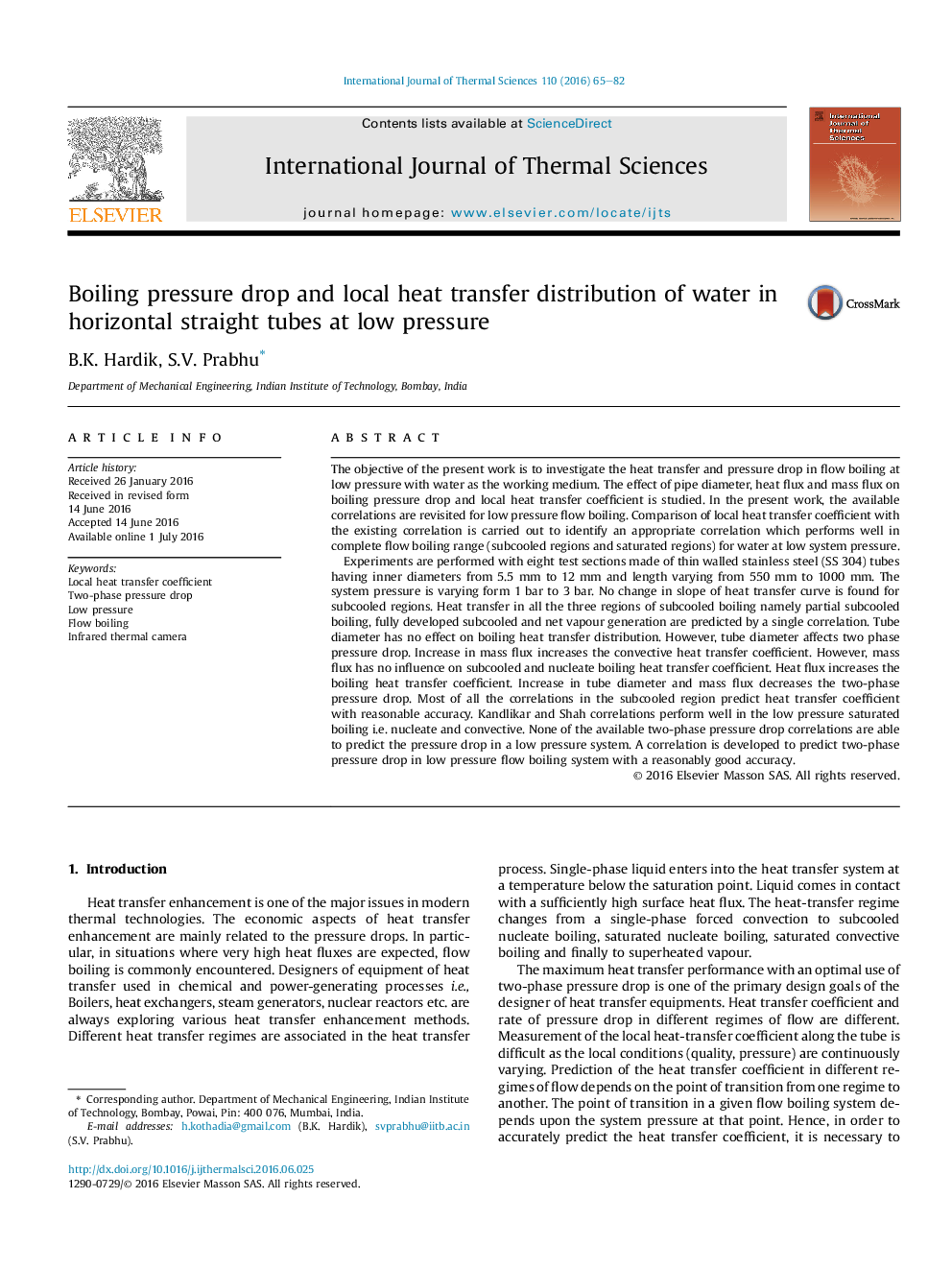| Article ID | Journal | Published Year | Pages | File Type |
|---|---|---|---|---|
| 668280 | International Journal of Thermal Sciences | 2016 | 18 Pages |
Abstract
Experiments are performed with eight test sections made of thin walled stainless steel (SS 304) tubes having inner diameters from 5.5Â mm to 12Â mm and length varying from 550Â mm to 1000Â mm. The system pressure is varying form 1Â bar to 3Â bar. No change in slope of heat transfer curve is found for subcooled regions. Heat transfer in all the three regions of subcooled boiling namely partial subcooled boiling, fully developed subcooled and net vapour generation are predicted by a single correlation. Tube diameter has no effect on boiling heat transfer distribution. However, tube diameter affects two phase pressure drop. Increase in mass flux increases the convective heat transfer coefficient. However, mass flux has no influence on subcooled and nucleate boiling heat transfer coefficient. Heat flux increases the boiling heat transfer coefficient. Increase in tube diameter and mass flux decreases the two-phase pressure drop. Most of all the correlations in the subcooled region predict heat transfer coefficient with reasonable accuracy. Kandlikar and Shah correlations perform well in the low pressure saturated boiling i.e. nucleate and convective. None of the available two-phase pressure drop correlations are able to predict the pressure drop in a low pressure system. A correlation is developed to predict two-phase pressure drop in low pressure flow boiling system with a reasonably good accuracy.
Keywords
Related Topics
Physical Sciences and Engineering
Chemical Engineering
Fluid Flow and Transfer Processes
Authors
B.K. Hardik, S.V. Prabhu,
